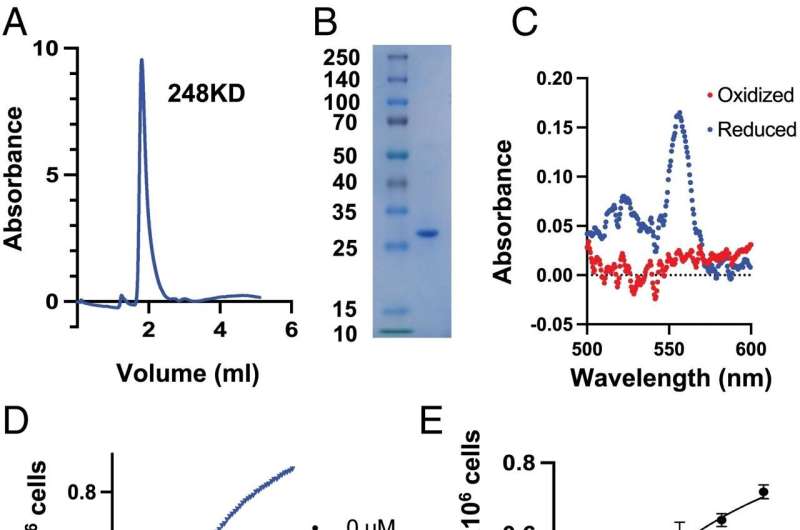Researchers develop system for generating oxygen within cells

Oxygen is vital for life, and clinicians can provide supplemental oxygen to patients through face masks and nasal tubes, but there are no methods available for delivering oxygen directly into cells.
This capability would be useful initially as a research tool but could eventually have important medical applications—for example, to enhance therapies that lose effectiveness when oxygen levels are low.
As reported in PNAS, investigators at Massachusetts General Hospital (MGH) recently developed a technology that allows them to engineer cells to make oxygen on demand in response to an added chemical.
The work was led by Vamsi K. Mootha, MD, a Professor of Systems Biology and Medicine in the Department of Molecular Biology at MGH, whose laboratory focuses on mitochondria. These specialized compartments within cells produce energy, and they require oxygen to do so. "We are interested in how mitochondria, cells, and organisms adapt to changes in ambient oxygen," says Mootha.
Currently, if the scientists want to manipulate cells' oxygen levels in the lab, they place a petri dish containing cells in an environmentally controlled chamber. While this is useful, they can't change oxygen levels in select cells at a specific time.
"From this need came the idea for a genetically encoded system that could be deployed in human cells to produce their own oxygen on demand," says Mootha.
The technology involves simultaneously expressing a transporter and a bacterial enzyme within a cell—together, these proteins promote the uptake of chlorite into the cell and enzymatically convert it into oxygen and chloride.
The researchers call their new genetic technology SNORCL, for SupplemeNtal Oxygen Released from ChLorite. The first generation SNORCL is capable of producing short and modest pulses of oxygen inside of cells in response to added chlorite.
"In the near-term SNORCL is really for the research arena, for evaluating the role of oxygen in signaling, metabolism, and physiology in great detail. But then in the future, technologies based on SNORCL could have a variety of clinical uses," says Mootha.
For example, tumors often have low oxygen levels that limit the effectiveness of some anti-cancer therapies. SNORCL might be used to improve these therapies' effectiveness in such environments.
More information: Andrew L. Markhard et al, A genetically encoded system for oxygen generation in living cells, Proceedings of the National Academy of Sciences (2022).
Journal information: Proceedings of the National Academy of Sciences
Provided by Massachusetts General Hospital













